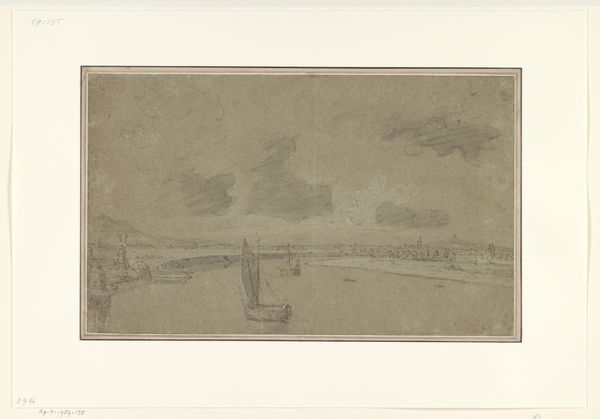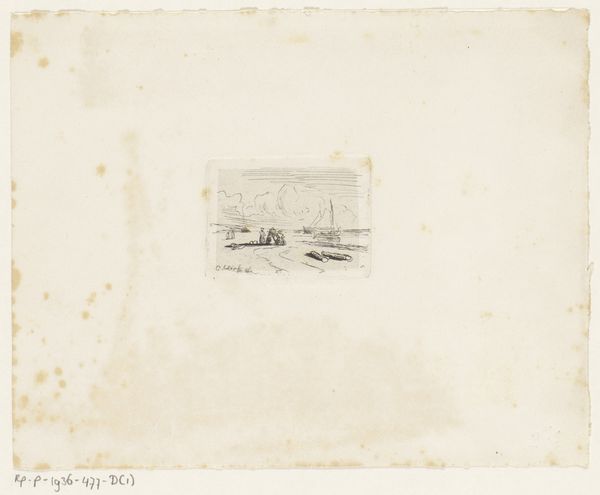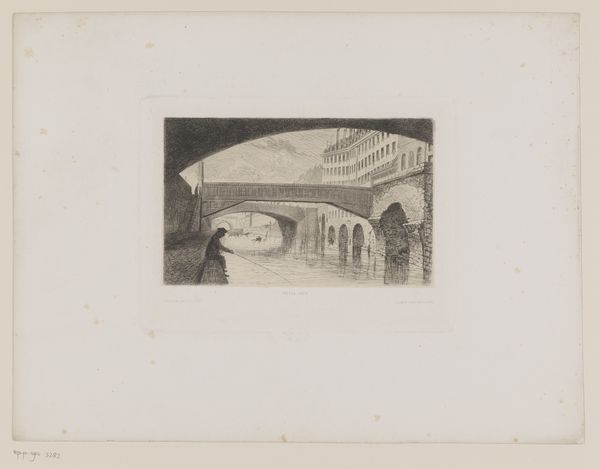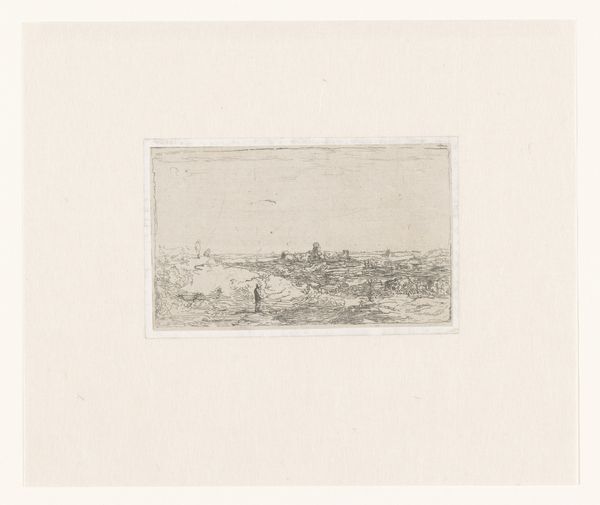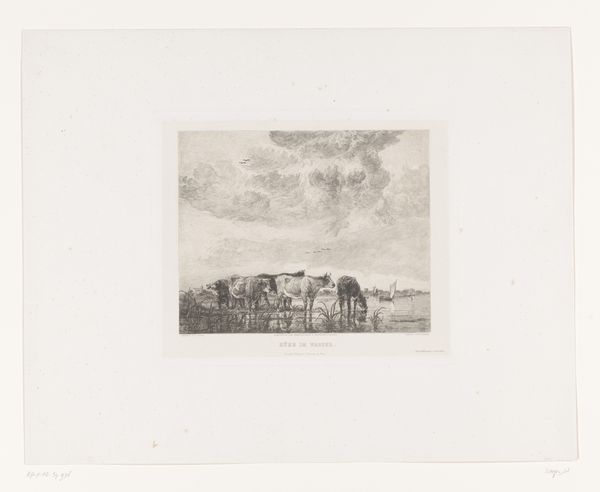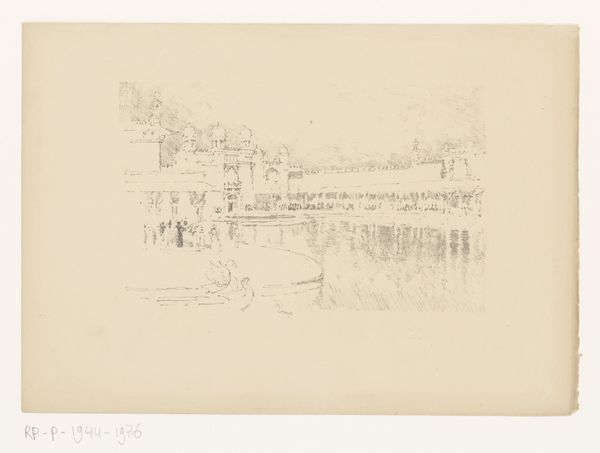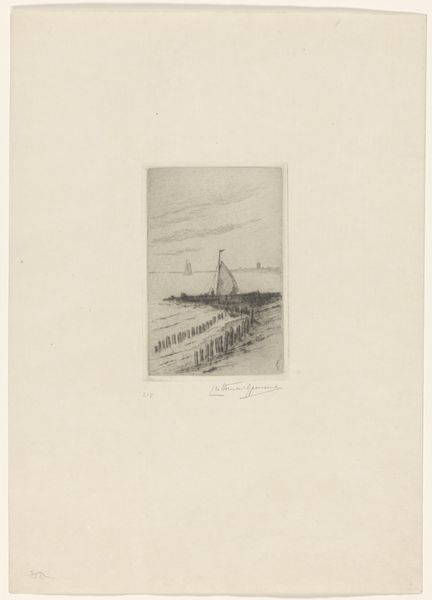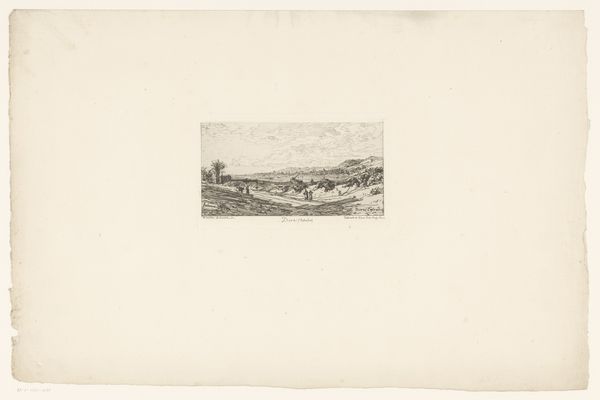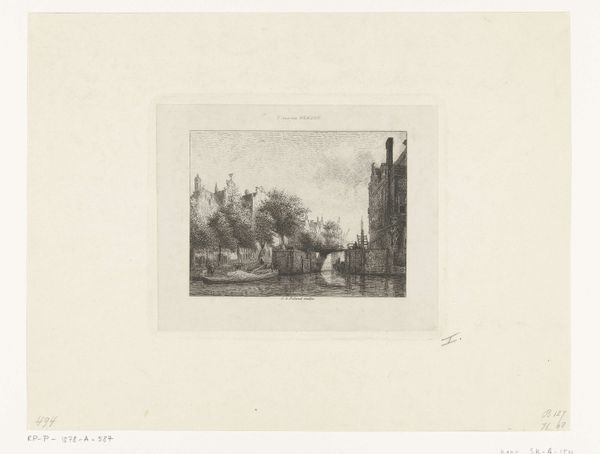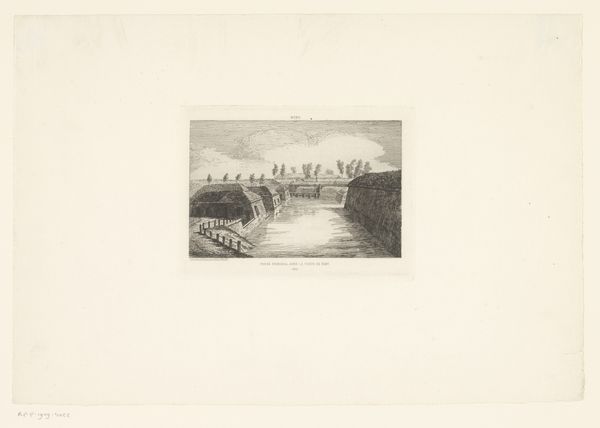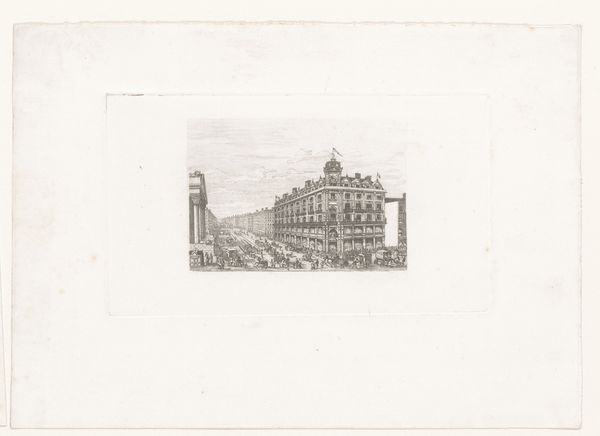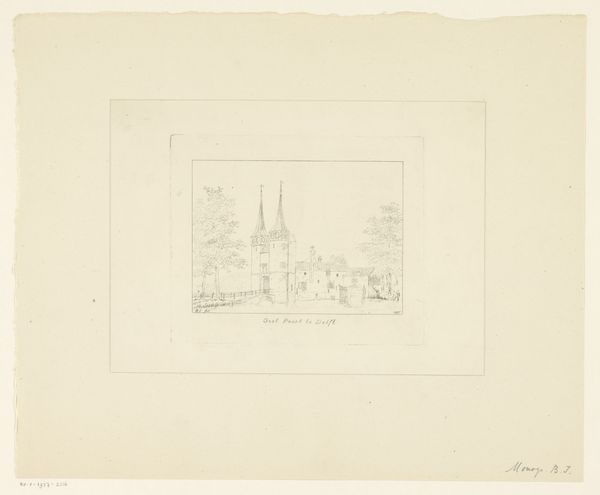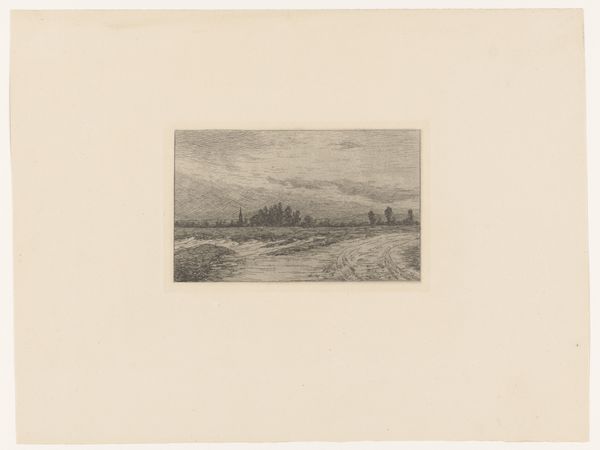
print, etching
# print
#
etching
#
landscape
#
modernism
#
realism
Dimensions: height 31 mm, width 88 mm, height 161 mm, width 250 mm
Copyright: Rijks Museum: Open Domain
Curator: Looking at this work, I immediately sense a profound stillness. It’s quite small, but draws me in. Editor: This is Mia Bake’s "Heidelandschap met bomen," or "Heath Landscape with Trees," created in 1927. It's an etching. What I find compelling about Bake’s work here is the subtle use of line. Curator: Indeed, notice the paper itself: the conscious choice to create such a small image at the centre really emphasises the texture, a tactile contrast to the smoothness and stark geometry often associated with modernism, particularly for a piece coming out of that period. I’m wondering about the labour involved in producing this, in preparing the etching ground. Editor: Precisely, etching allowed for wider circulation of images at a time when print media played an increasingly central role in shaping public perception. The choice of a heath landscape might reflect the popular yearning for unspoiled nature, or maybe it comments on industrialization. After all, heathlands themselves are often a product of human activity – think of sheep grazing! Curator: The heathland does offer a seemingly endless supply of materials to work with, be it fuel or building, and thus would have been deeply enmeshed in daily life and labour practices, something I wonder Bake aimed to capture. But these etches... They become commodities themselves. Did this impact the art scene or cultural associations tied to landscape appreciation and what role did the commercial distribution of prints play in mediating those experiences for people removed from rural life? Editor: That's an astute point. Printmaking also democratized access to art, disseminating imagery beyond elite circles. Mia Bake was active in a period marked by social and political upheaval, not to mention a developing market economy for prints, so how might these trees symbolically address broader themes of landscape and memory in 1920s Netherlands? Curator: Interesting! I hadn’t thought of it that way. For me, reflecting on it from this angle gives even more reason to appreciate how material informs both production and the meaning of a work. Editor: Agreed! The piece gives us a glimpse of how artistic vision becomes entwined with cultural history.
Comments
No comments
Be the first to comment and join the conversation on the ultimate creative platform.
